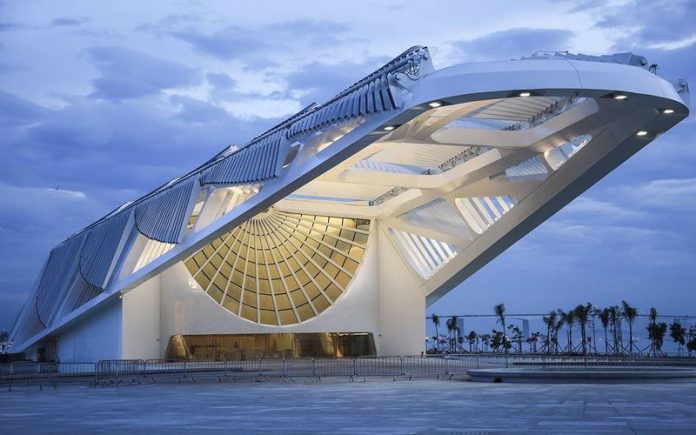Scientific ideology and “intellectual control”, according to the Italian critic of modern architecture Bruno Dzevi, can be called as analogies between the rationalism of the XX century and the rationalism of the Renaissance, the era of the formation of the profession of architect. The discovery of Renaissance poetics, which is based on perspective, is equivalent to the discovery by the Cubists of the fourth dimension, which provided the opportunity for the development of modern rationalism.
The myth of the “perfect size”, the use of the “golden section”, the search for a design method that would be suitable for any architectural theme, as well as didactic attitudes combine the trends of architecture of the XX century with the Renaissance: in both cases poetry focused on mathematics, elementary geometry and stereometry.
Having overcome the period of the “modern movement” with all its achievements and contradictions, architecture from the middle of the XX century found itself facing new challenges. The opinion of the masters on this matter is different. So, A. Aalto believes that “the architect has a very specific task: to humanize the mechanical essence of building materials.” K. Tange is sure that “we can only hope for human ingenuity,” but adds that “ingenuity without method is fruitless. We face an eternal problem: order or freedom, system or arbitrariness. But the main thing is that we can get a true idea of the whole only by striving for both poles. A one-sided approach is not enough. The task is to sort out the apparent incompatibility.” This is a kind of policy statement of Tange was made in a speech at a conference of designers in Tokyo in 1960, dedicated to the development of humanistic culture. Architecture and design, according to Tange, are the only intermediate link between technology and man.
The ethics of the professional activity of the architect of the “modern movement” allows the introduction of the architecture of “order” into the “chaotic” environment “from the outside”, which is reflected in the facts of professional behavior – discussions, competitions, manifestos, etc.
Just as at one time the ideas of classicism, thanks, in particular, to the development of the theoretical heritage of Palladio, attracted the attention of various architectural schools, so today, in the context of a general interest in history, in many countries there are peculiar modifications of the traditions of geometric rationalism, the symbolism of abstract professional thought as such.
Rationalism in its neovariants looks for architectural themes of structures within architecture itself. Its ethical principle is based on the canonization of some typological and structural “constants” of architectural composition and the recognition of their timeless universality. Among them are classical symmetry, proportionation schemes, archetypal geometric plots. The rejection of any technological innovations and the focus on traditional building materials and methods is also characteristic. At the same time, the essence of architecture as art is understood in the rejection of subjective invention and in the comprehension of “absolute simplicity”. But the architectural works of modern rationalists, projects, buildings are not so easy to understand, demonstrate the irrepressible imagination and ingenuity of architects in the traditions of a special sacredness of creativity.
Today’s rationalism is trying to revive the monumentality of the geometric architecture of France in the XVIII century. His supporters call his forerunners Bulle with his abstract super-scale architecture, Durand, who argued that “architecture should be content with only the vital, because satisfaction brings only what is built in a practical and economical way.”
Italian architect Mario Botta, whose works in the style of “new Toscanism” evoke architectural images of Ledoux, as well as Japanese architect Arata Isozaki, who is trying to breed the traditional Japanese concept of symbolic construction of space with classical European geometric ordering, belong to the active supporters of this trend of modern architecture.
Among the supporters of modern rationalism, the name of an English architect is called.
The leader of the latest rationalism, according to critics, is the Italian architect Aldo Rossi, whose work is the embodiment of a “pure symbol”. In 1973, he published the catalog of the XV Trienale in Milan under the title “Rational Architecture”. This event is considered to be the beginning of the modern stage of rationalism.
The architecture of Russia is inspired by the ideas of French megalomaniacs of the XVIII century; despite the schematism of the compositions, it generates a variety of associations and interpretations. Its expressiveness is based on the use of elementary forms, devoid of detail, but refined in combinations. These are, in particular, the famous cemetery project in Modena, a floating theater in Venice, an extended residential block in the Gallaratese quarter in Milan.
Rossi is trying to lock architecture into an autonomous sphere, which has its own laws, deduced by typological research of elements of architectural heritage. His architectural compositions resemble diagrams-illustrations on various topics from a textbook on architectural composition: connecting openings, identifying the main volume, emphasizing axes, rhythmic and metric series, etc. The rational embodiment of the “ideal scheme”, the search for stable archetypes of the language of the profession is the goal of Aldo Rossi. The researcher of architecture of the West A. Ikonnikov notes that “by reducing architecture to the fundamental foundations, to Platonic abstract bodies, appealing to the examples of Liege and Ledoux, Rossi creates compositions full of sardonic infantilism.” And moreover, “through Rossi’s architectural drawings, made as if by the hand of a child, a grin of Dadaism emerges.”
Rossi does not repeat well-known forms, does not create his own version of classicism, he inherits the very style of compositional thinking of classicism with its tendency to ordering, symmetry, the dominance of the monument over ordinary buildings.
